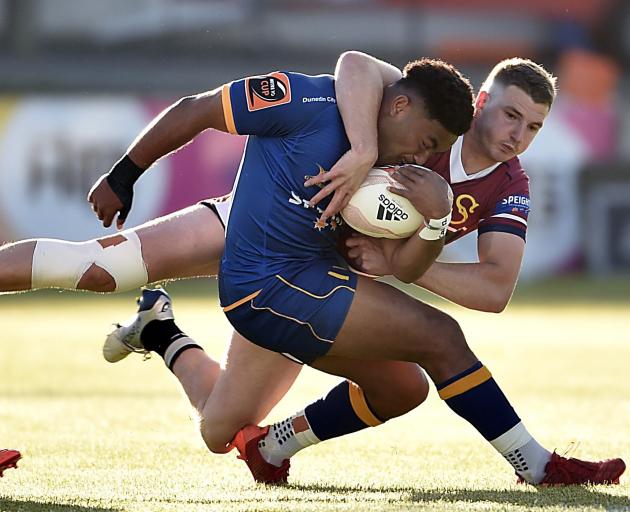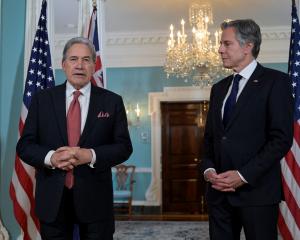
Rugby World Cup winners have joined a chorus of voices calling to reduce tackling in the sport in a bid to stop the growing number of brain injuries afflicting many of its former players.
When the likes of 42-year-old 2003 Rugby World Cup winner Steve Thompson announced he could not remember the tournament because his brain was left too damaged from his career, he highlighted that rugby, in its current state, is not fit for contemporary society.
Invented in the 1800s, when safety was far less of a concern, rugby has been resistant to change. But last week, Thompson and 80 other high-profile former rugby players announced they were living with dementia, many of them experiencing it as early as their 40s.
Another former England player, Michael Lipman, said:
‘‘If I knew then what I know now, in terms of how I’m feeling, and what my wife and family go through on a daily basis, I definitely would have been a hell of a lot more careful.’’
Players are suing several governing bodies, including World Rugby and the Rugby Football Union. The law suit, which is in its infancy, will no doubt grow in claimants.
World Rugby responded to the lawsuit with a statement saying it ‘‘takes player safety very seriously and implements injury-prevention strategies based on the latest available knowledge, research and evidence’’.
Professional rugby will have its reckoning in the courts. But if the impact of tackling on the brain is strong enough that devoted rugby heroes are suing their former employer, policies need to be drastically revised and soon, particularly for children. The first thing the sport must do is protect young players by banning tackling for under-18s and transitioning to touch rugby.
In denial
Chronic traumatic encephalopathy (CTE) is not new. It was first described in the 1920s in boxers (it was called ‘‘punch-drunk syndrome’’ at the time). But now research is proving what scientists, players and their families have long claimed — that repeated collisions are causing permanent damage to the brain.
When England’s 1966 World Cup-winning football heroes began to be diagnosed with dementia, the football world took notice. Now it is England’s World Cup rugby heroes who are suffering — and suffering younger. The Football Association banned heading the ball in training for children up to the age of 12, and severely restricted it after. It’s time for the rugby unions to react in the same way.
But whereas football can remove heading from the game, rugby is predicated on collision. As noted by one journalist, the only way to make rugby safe in its current format is to stop playing it. And earlier this year, researchers linked with England’s Rugby Football Union found that their sport offers more head trauma than other sports.
The case of rugby is more reminiscent of what happened to the US’ National Football League in 2013 after the discovery players were at increased risk of long-term neurological conditions, particularly CTE. Scores of players sued the NFL and received a $US1billion payout.
The NFL has, for now, survived. World Rugby has insurance, so it might too. Yet surviving this lawsuit is only one threat to the sport. The fear over children playing the game will no doubt be rugby’s biggest threat.
No more half measures
Sporting bodies can no longer take half measures and policy must evolve to protect the huge numbers of children playing rugby. Children receive legal protection from other known harms, the list for which is very long (smoking and alcohol use, for example).
Both football and rugby are regularly played by children, and particularly in school PE. But whereas children under 12 are not permitted to head the ball in practice, they can tackle another player in rugby training. And where children over 12 are permitted to head the ball only five times a month in football, they can be tackled by a player twice their size as often as the PE teacher decides.
Experts are now calling for tackling to be removed from the sport for children — and curtailed in practice for adults. This means children should play touch rugby until they are 18. They can then make an informed decision to transition to tackle rugby or continue with touch when they are old enough.
Research shows touch rugby is rising in popularity and has better health outcomes for children. But calls for bans on tackling in compulsory school rugby have gone unheeded for many years.
History shows industries respond to health crises when they are forced to do so — either through legal cases or government legislation.
A key example is how the tobacco companies were forced to stop denying the harmful effects of smoking in the 1990s. Rugby is no different.
Public pressure and court cases may drive change at some level but legislation is needed to protect players, particularly children.
In the US, the Concussion Legacy Foundation has launched the ‘‘tackling can wait’’ campaign for American football.
It’s time for the UK to follow and protect its children from brain injury by banning tackling in youth rugby. It will be for the courts and the players’ unions to determine how much tackling adults can do — but if they have any sense, they will heed the warnings of those World Cup heroes. — theconversation.com
- Eric Anderson is a professor of masculinities, sexualities and sport at the University of Winchester. Adam John White is a lecturer at Oxford Brookes University. Keith Parry is deputy head of department in sport and events management at Bournemouth University.
Comments
Where exactly is the evidence that tackling in kids' rugby has any effect on dementia susceptibility? The link is noisy enough, despite being plausible, for professionals, but for children it's effectively non-existent.
Because of their age. It's long term atrophy.
Seems an extreme step. What about the much talked about no tackles above the waist option? Combined with Rippa rugby till at least under 12 this should be a far better way forward.












